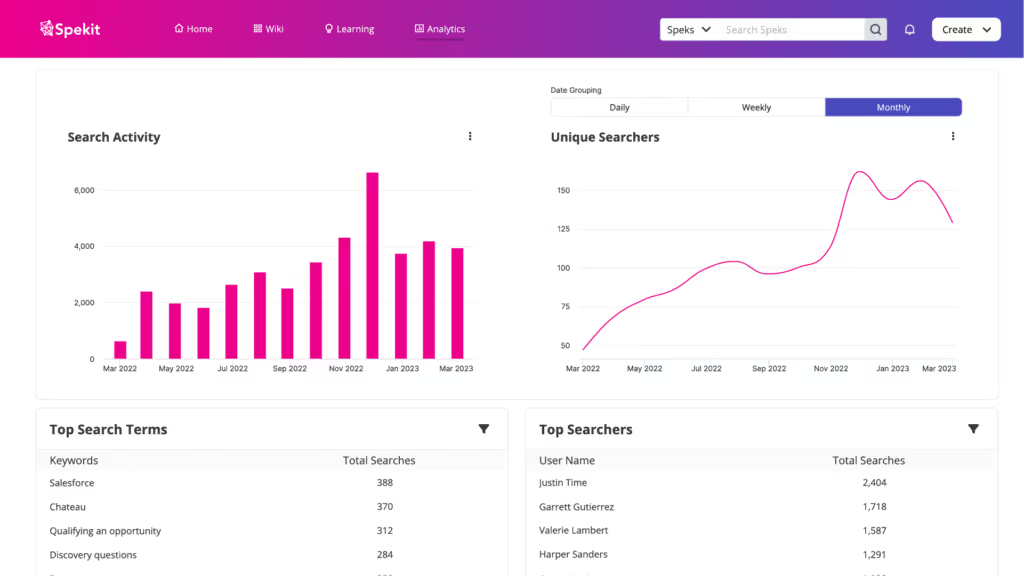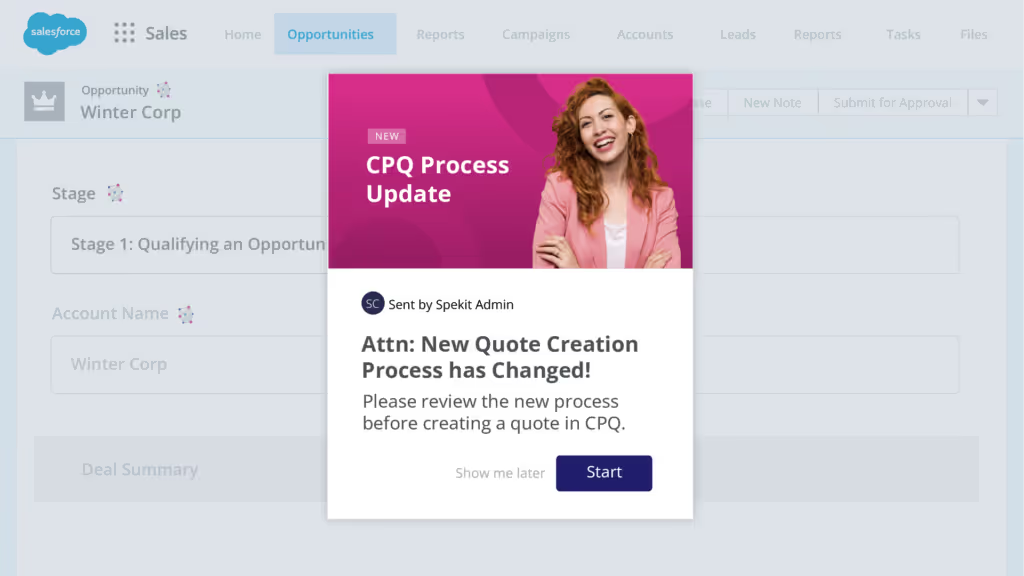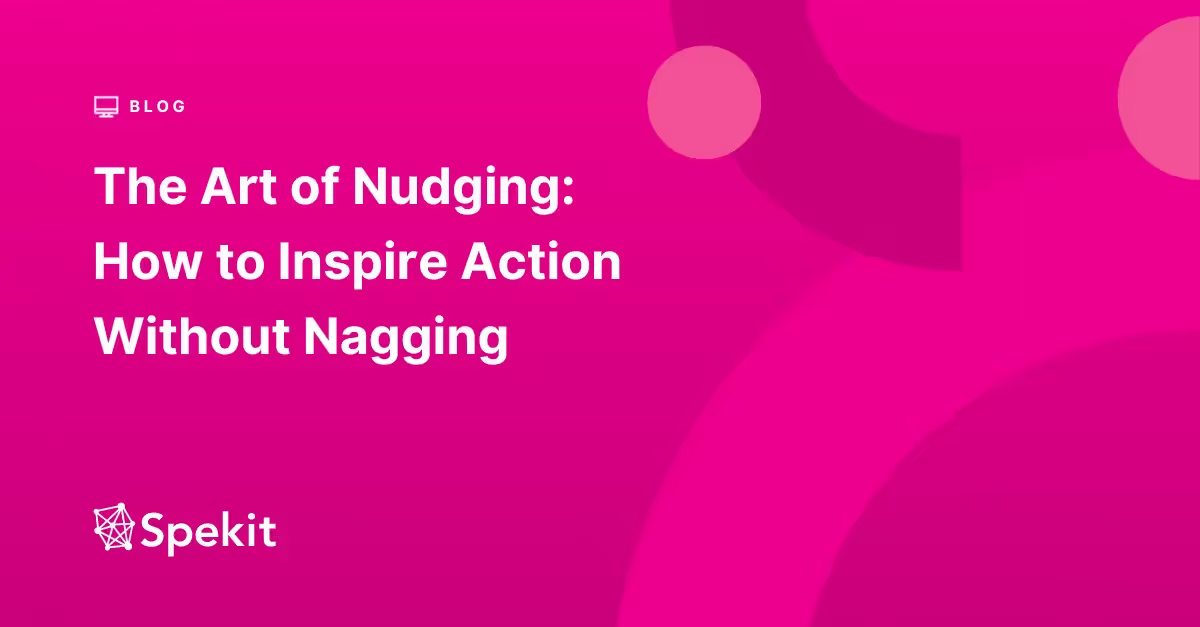Imagine the chaos of a typical morning. You’re trying to get your kids ready for school, and your youngest has yet to put on their shoes. You’ve reminded them about a dozen times already. But what if, instead of nagging again, you said, “Remember how fast you tied your shoes yesterday? Bet you can’t beat your record!” That’s a nudge – gentle, positive reinforcement that motivates action without the negative feeling of being nagged. It’s a subtle adjustment, but it makes a world of difference in the response you receive.
This same principle applies when we want to increase user engagement with content and inspire behavioral change. Like our everyday interactions, we don’t need to resort to nagging – we need to master the art of nudging.
A few months ago, our team had the pleasure of attending the ATD 2023 conference in San Diego, and one presentation stood out: “Nudging, Not Nagging” by Tina I. Dooley and April Ray from Amway Corporation. Their insights on using Nudge Theory to turn great content into engagement gold inspired us, and we’re excited to share those key learnings with you in this blog post.
Let’s dive in.
But first…what is Nudge Theory?
Nudge Theory is a behavioral science concept that uses positive reinforcement and indirect suggestion to influence behavior and decision-making.
Effective nudges can dramatically increase user engagement – and more importantly, they are not about nagging but guiding users towards desired actions.
The 5-Step Framework to Unleash the Power of Nudges
Unleashing the power of nudges and driving behavior change requires a systematic approach. This 5-step framework provides a roadmap to effectively leverage nudges for impactful learning experiences, ensuring that your nudging efforts are learner-centered, aligned with organizational goals, and designed to prompt the desired behaviors.

Step 1: Begin with the learner at the center – get to know their needs and understand their situation. When you put the learner first, you can customize your approach and create a personalized learning experience that resonates.
Step 2: Connect with your organization’s desired business activities and outcomes. Align your learning objectives with the goals and vision of the company to drive meaningful results.
Step 3: Choose the related learning path, a combination of assets that take learners on a comprehensive journey.
Step 4: Identify the behavior you want to nudge. Focus on the key actions you want learners to take from the provided content. Behavior is where it’s at!
Step 5: Learn what motivates learners to exhibit the desired behavior. Highlight attention-grabbing aspects, align the behavior with their goals and past experiences, reinforce their beliefs, boost self-confidence, emphasize ease, and showcase how peers are achieving success through the same behavior.
It’s essential to consider all of these factors before you decide to nudge.
This framework provides a solid foundation to guide your nudging efforts and is a valuable starting point to drive behavior change and create impactful learning experiences.
Strategies for Writing Effective Nudges
Getting users to engage often requires a gentle push in the right direction. Nudges must be strategically crafted to be effective for users and unlock their transformative potential.
The following strategies will ensure that your nudges resonate with your audience and effectively spur action:
Use Questions to Increase Engagement
Questions can spark curiosity and prompt action. For example, asking users, “What would you do?” can stimulate reflective engagement.
Grab Attention with Capitalization
Use selective capitalization to catch attention. For instance, start a nudge with capitalized words like “NEW” or “FOR YOU.”
Speak Directly to Users with Local Slang and Relevant Terminology
Use familiar language, local slang, and trending topics to build rapport and make nudges feel more personalized.
Follow the TPA Rule
Ensure each nudge is Timely, Personable, and Actionable. Send nudges at relevant times and include specific, personal details and clear next steps.
Motivate in the Moment
Make your nudges concise, direct, and focused on current motivators. Avoid overwhelming users with too many nudges.
Focus on the Positive
Maintain a positive tone in your nudges. Use fun elements like emojis or GIFs to celebrate achievements and evoke positive responses.
Include Direct & Valuable Links (Online)
Include a relevant, clickable link in each digital nudge to guide users to helpful resources or additional information.
Emphasize Value
Ensure each nudge highlights the value the user is providing to themselves and others. Use personal language and familiar phrases to reinforce user goals.
So, how can these nudge techniques be effectively integrated into just-in-time learning? Using timely and relevant nudges can significantly enhance the effectiveness of workplace learning. Let’s explore this further.
Nudge, Don’t Nag, with Just-In-Time Learning
Just-in-time learning is all about delivering the right content at the right time. It aligns with the user’s current needs and context, ensuring they receive relevant information when they need it. This is where nudging comes into play.
Tools like Spekit can deliver nudges when and where employees need them most, with a LMS for sales training to reinforce learning in the flow of work.
Our workplace learning solution offers features that provide gentle reminders or prompts, encouraging users to engage with specific content.
For example, when an employee needs to review a company policy or an unfamiliar process, Spekit can nudge them with relevant, bite-sized knowledge that is easily accessible in the Spekit Sidebar, ensuring answers are always just a click away. This nudge isn’t intrusive or nagging; it’s a timely, supportive suggestion that enhances the user’s experience and learning process.

One of the most powerful aspects of this approach is its adaptability. By using Spekit Analytics, you can gain insight into what content is being used and where engagement is low. This data allows you to adapt your nudges accordingly, directing traffic to areas that may be underutilized or not appreciated.

Additionally, Spekit is crucial in streamlining change management operations within your organization. When new content, processes, or policies are introduced, Spekit can nudge your team toward this new information with Spotlights, in-app alerts that quickly communicate changes and new processes to your team right in their flow of work. Instead of overwhelming users with a barrage of information, these targeted nudges offer a smoother transition and foster a more receptive learning environment.

But Spekit does more than deliver content; it empowers users to see the value of their actions. By providing answers in the flow of work and nudging users to engage with new content, they can immediately see the benefits and practical application of their learning. This in-the-moment motivation can be a significant driving force for engagement and behavioral change, turning the traditional learning paradigm on its head.
Nudging is a powerful tool for driving engagement and behavior change, but it requires ongoing coordination, measurement, and adjustment to ensure effectiveness.
The aim is to guide and suggest rather than push and dictate.
Leveraging just-in-time learning and Nudge Theory with tools like Spekit can dramatically enhance user engagement, foster more impactful learning experiences, and streamline organizational change. Rather than nagging, you’re offering useful, timely, and context-specific support that truly resonates with your users.
For further insights into the world of “Nudging Not Nagging”, join the conversation with Tina I. Dooley and April Ray from Amway Corporation on their Instagram page.
Find out how Spekit’s just-in-time learning solution can be a pivotal tool in boosting engagement with your content and positively influencing user behavior to maximize efficiency, demonstrate ROI, and drive successful business outcomes in your organization. Learn more here.
More like this
Make Every Employee Your Best Employee with Everboarding







